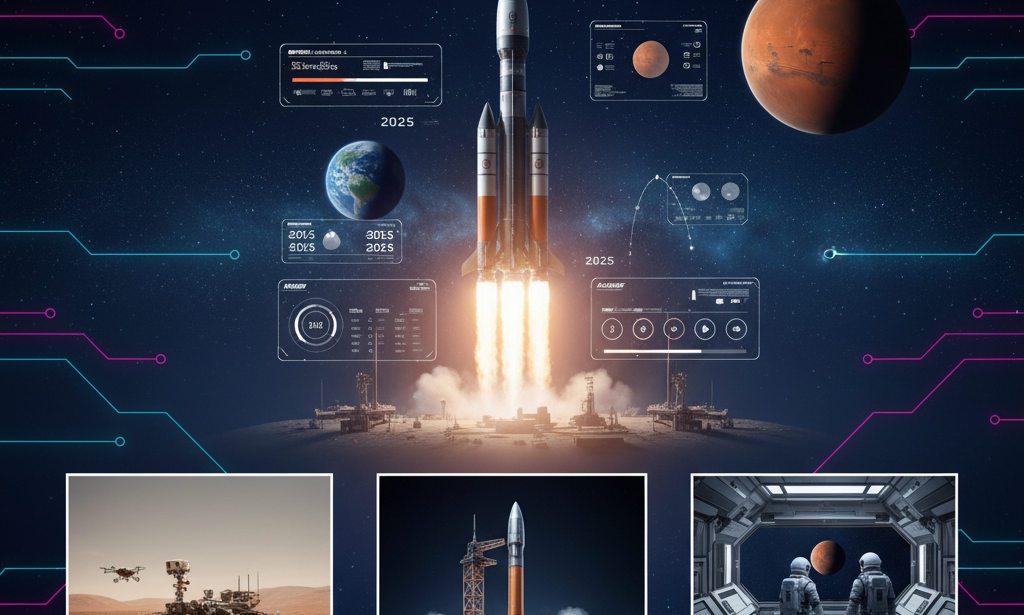For centuries, humans have dreamed of traveling to Mars. In 2025, that dream feels closer than ever. Global powers and private companies are in a fierce competition to become the first to put boots on the Red Planet — and the progress being made is historic.
NASA’s Artemis Program is laying the foundation by sending astronauts back to the Moon, using it as a staging ground for future Mars missions. The idea is to test life-support systems, fuel production, and astronaut endurance before taking the leap across 225 million kilometers to Mars.
SpaceX, led by Elon Musk, continues to dominate headlines with the Starship — the world’s largest rocket, designed to carry up to 100 people to Mars at a time. Test launches in 2025 show promising results, and Musk insists the first human trip could happen within the decade.
Meanwhile, China’s CNSA is investing heavily in robotic Mars missions. Their Zhurong rover has already been exploring the Martian surface, and plans are underway to test soil samples and water ice for future colonization.
Challenges remain enormous: deadly radiation, psychological strain from long isolation, limited food and oxygen supplies, and the astronomical costs of such missions. But with international partnerships forming and rapid advances in technology, Mars colonization no longer feels like fantasy.
The race to Mars isn’t just about national pride. It’s about humanity’s survival and curiosity. The first human settlement on another planet may happen sooner than most people think.
▶️ Videos
Humans on Mars by 2030?: video
SpaceX Starship Updates: here


You must be logged in to post a comment.